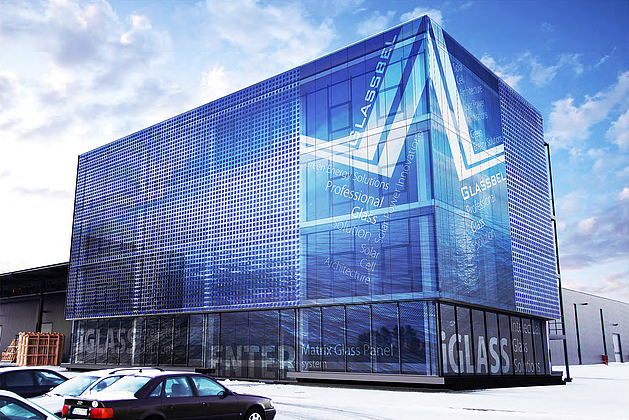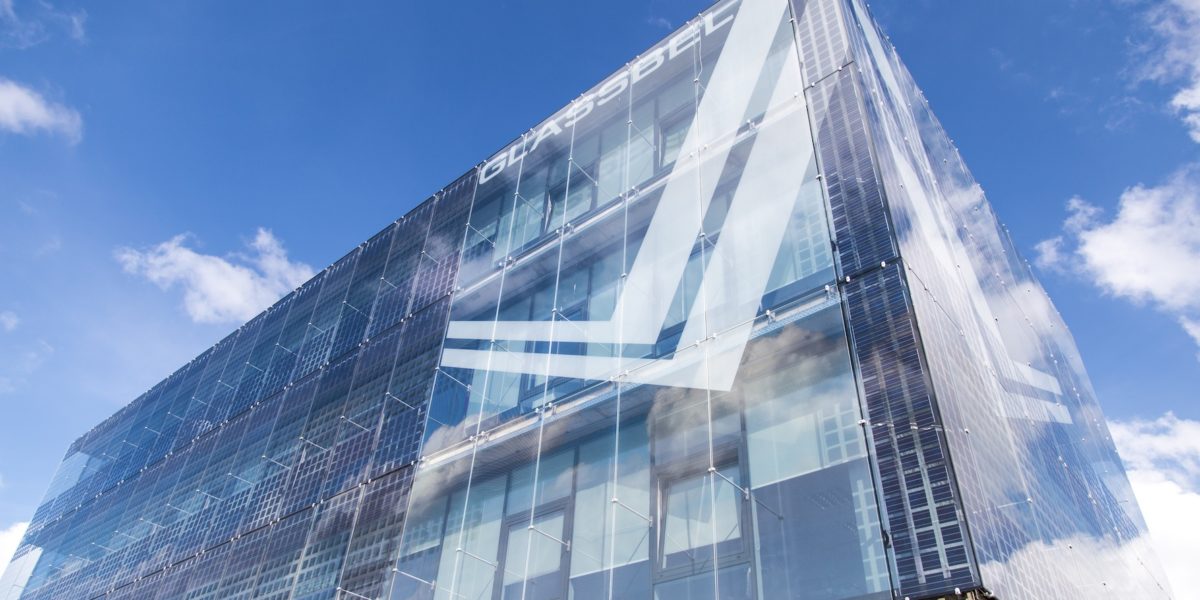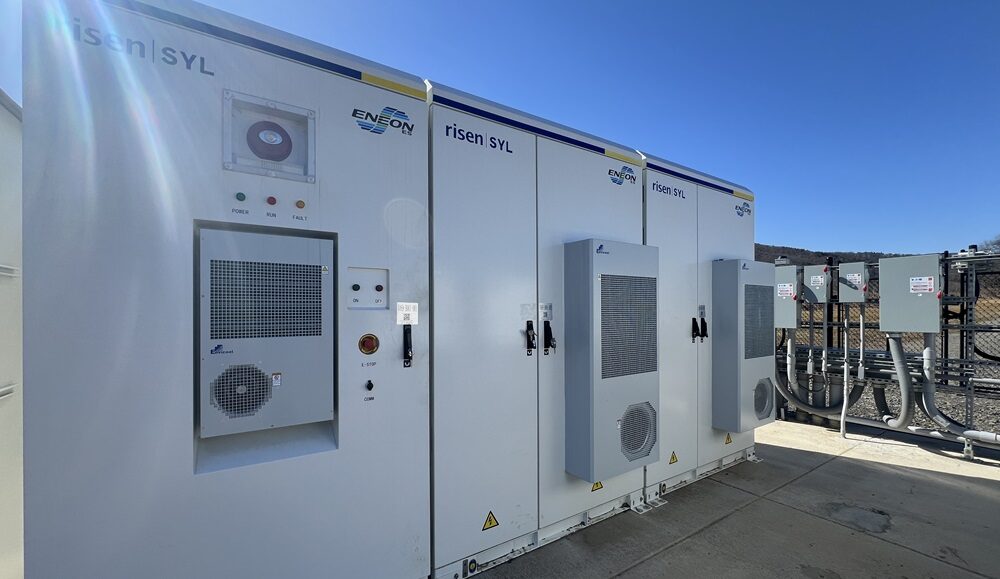A project supported by the EU for the further development of glass façades with integrated photovoltaics has now succesfully completed a six month test phase. “Smartflex Solarfacade” shows, that solar façades represent not only an aesthetically appealing solution, but also a financially viable means of achieving climate targets in buildings, as the Smatflex claims in a press release from Wednesday.
A glass façade with 75 glass-glass modules in 15 different sizes was installed as a reference project at the office building of Lithuanian glass manufacturer Glassbell in November last year. The largest were 1.7 meters wide and 3.6 meters long.
According to Smartflex, the façade covers an area of 600 square meters. 112 square meters of which are equipped with semitransparent photovoltaic modules with a total output of 15 kilowatts. The production of the very heavy and large glass components was particularly difficult, while applying the photo print onto the module glass was not a problem, says Tomas Lenkimas, Head of Glassbel’s R&D department.
To measure the yield the photovoltaic institute Berlin (PI Berlin) installed a weather and measuring station on the roof of the office building in the Lithuanian city of Kleipeda and tested the modules on site. Based on the collected data over the last six months, Thomas Weber, project manager at PI Berlin predict that the system’s specific yield could be up to 800 kWhhour/kW. “Thanks to our detailed monitoring during commissioning, we were able to make some improvements which led to an increase in revenues of 25% in parts of the plant” says Weber.

Source: Glassbel
According to the project partners' calculations, the cost of the solar glass façade is around €550 per square meter. This is approximatey the same as for a façade made of stone or metal, but significantly cheaper than a glass-window façade, costing up to €840 per square meter. “We even identified further cost-saving potential during the project. But it is already clear from the test system that customised solar façades are not only aesthetically attractive, but also a financially viable alternative to other types of façade,” says Dr Juras Ulbikas, Senior Researcher at the Applied Research Institute for Prospective Technologies (ProTech) in Lithuania and Coordinator of the SmartFlex project. “Furthermore, installing solar façades can help in the effort to meet statutory climate protection targets for buildings.”
Something unexpected for the project participants was the cooling side effect of the glass façade. Lenkimas claims that the partial shading through the solar cells provided a pleasant room climate without disturbing the outside view.
The Smartflex project received €2.9 million through the seventh Framework Program for Research and Innovation of the European Union. In addition to Via Solis, Glassbel and ProTech, the project partners include the Photovoltaik-Institut Berlin, the mechanical engineering company Mondragon Assembly, the Swiss BiPV Competence Centre (SUPSI), the planning software developer Creative Amadeo and the specialist renewable energy agency Sunbeam Communications.
This content is protected by copyright and may not be reused. If you want to cooperate with us and would like to reuse some of our content, please contact: editors@pv-magazine.com.



By submitting this form you agree to pv magazine using your data for the purposes of publishing your comment.
Your personal data will only be disclosed or otherwise transmitted to third parties for the purposes of spam filtering or if this is necessary for technical maintenance of the website. Any other transfer to third parties will not take place unless this is justified on the basis of applicable data protection regulations or if pv magazine is legally obliged to do so.
You may revoke this consent at any time with effect for the future, in which case your personal data will be deleted immediately. Otherwise, your data will be deleted if pv magazine has processed your request or the purpose of data storage is fulfilled.
Further information on data privacy can be found in our Data Protection Policy.